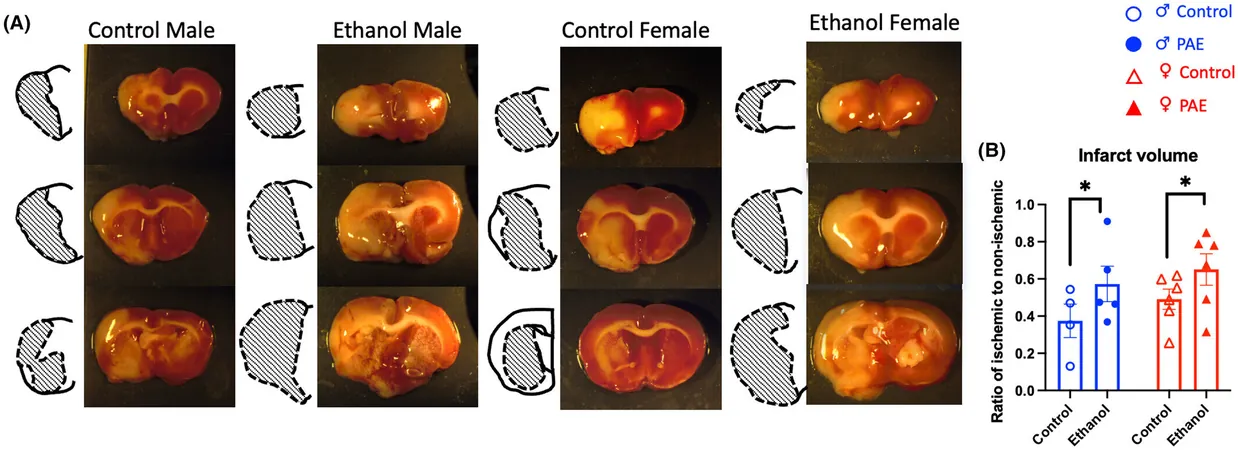
Surprising New Findings: Trees May Not Release Carbon as Expected!
2025-06-02
Author: Siti
A Climate Paradigm Shift?
Climate change discussions often highlight dire warnings about rising temperatures and shrinking forests. However, a groundbreaking study published in the journal Science provides a glimmer of hope, suggesting that our understanding of how trees respond to global warming might need a serious reevaluation.
The Role of Trees in Our Climate System
Trees are critical players in managing Earth's carbon dioxide (CO2) levels, absorbing carbon during photosynthesis while releasing some back into the atmosphere through respiration. Traditionally, scientists have predicted that as global temperatures rise, tree respiration would spike, contributing to elevated CO2 levels and exacerbating climate change.
A New Perspective on CO2 Emissions
However, a global study spearheaded by researchers from Tsinghua University reveals that trees might not emit as much carbon as previously feared. This discovery is crucial, as it challenges the long-held belief that warming temperatures would lead to significantly increased CO2 emissions from trees.
Understanding Tree Respiration
Focusing on stem respiration—how trees release carbon during growth—the study utilized a comprehensive dataset of stem respiration measurements across diverse tree species from various climate zones. By examining data collected over the last decade, researchers uncovered that trees can adapt to higher temperatures in ways that may slow CO2 release.
Short-term vs. Long-term Responses
Past research emphasized short-term experiments where tree respiration rates dramatically increased with heat exposure. However, this new study indicates that while trees may initially ramp up CO2 emissions during brief periods of warmth, this response doesn’t persist in the long run. Professor Ian Wright, a co-author of the study, explains that long-term thermal acclimation helps mitigate the effects of rising temperatures.
Implications for Climate Models
These findings could revolutionize climate modeling. Current models often predict a continuous rise in tree respiration with increasing temperatures, an assumption that may be overly simplistic. With better data on how trees respond over time, scientists can refine their models and adjust predictions accordingly.
A Beacon of Resilience
Notably, this research suggests trees possess an intrinsic ability to adjust and regulate their carbon release. This finding adds a level of resilience to Earth’s ecosystems, indicating that while human emissions continue to rise, nature itself may help buffer some of the consequences.
Cautious Optimism Amidst Climate Challenges
While the potential for trees to slow carbon emissions does not eliminate climate risks, it demonstrates a more complex and manageable relationship between ecosystems and climate change. As climate experts call for advanced predictive models, this study offers a fresh outlook on how the natural world might better endure and adapt in the face of adversity.
Final Thoughts
In essence, the research serves as a reminder that nature has its own strategies for coping with change. By understanding how trees can adapt and adjust, we gain insights that could help mitigate the impacts of climate change—offering a much-needed ray of hope.





 Brasil (PT)
Brasil (PT)
 Canada (EN)
Canada (EN)
 Chile (ES)
Chile (ES)
 Česko (CS)
Česko (CS)
 대한민국 (KO)
대한민국 (KO)
 España (ES)
España (ES)
 France (FR)
France (FR)
 Hong Kong (EN)
Hong Kong (EN)
 Italia (IT)
Italia (IT)
 日本 (JA)
日本 (JA)
 Magyarország (HU)
Magyarország (HU)
 Norge (NO)
Norge (NO)
 Polska (PL)
Polska (PL)
 Schweiz (DE)
Schweiz (DE)
 Singapore (EN)
Singapore (EN)
 Sverige (SV)
Sverige (SV)
 Suomi (FI)
Suomi (FI)
 Türkiye (TR)
Türkiye (TR)
 الإمارات العربية المتحدة (AR)
الإمارات العربية المتحدة (AR)